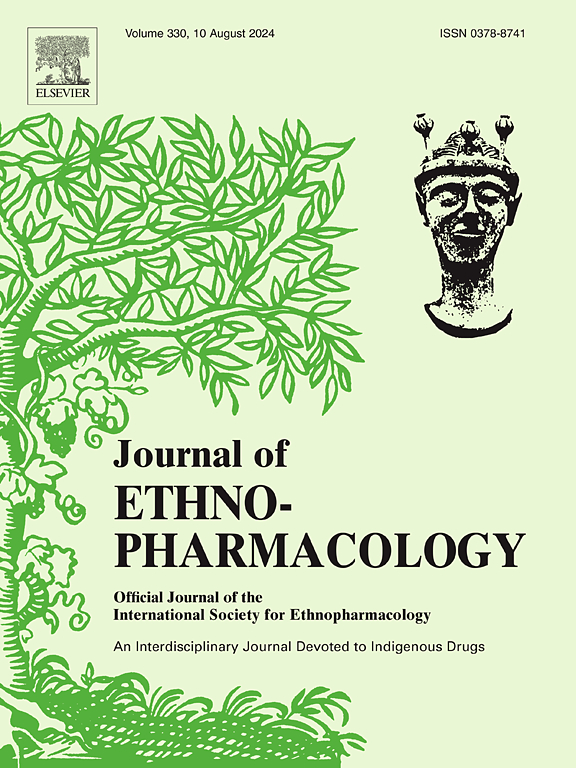Mechanistic exploration of licorice reconciling Medicine:Huangqi Guizhi Wuwu decoction and Shaoyao Gancao decoction compatibility as an example
IF 4.8
2区 医学
Q1 CHEMISTRY, MEDICINAL
引用次数: 0
Abstract
Ethnopharmacological relevance
Glycyrrhiza uralensis Fisch. (GU) is a pivotal botanical in traditional Chinese medicine (TCM), because of its ability to reconcile various herbs, and its crucial role in numerous formulas. Huanggui Shaogan decoction (HSGD) is an empirical formula, developed by Huangqi Guizhi Wuwu decoction (HGD) and Shaoyao Gancao decoction (SGD), and prepared by adding GU to HGD. However, the mechanisms of GU reconciling medicine remain incompletely characterized.
Aim of the study
This study aimed to explain mechanisms of GU reconciling medicine based on the differences of components, pharmacological efficacy, and the existence of the components.
Methods
Differential components between HSGD and HGD were systematically identified using LC‒MS/MS coupled with chemometric analysis. The existence states and binding affinities of these differential components were further characterized via ultrafiltration separation. The therapeutic potential of HSGD was validated in a murine model of oxaliplatin-induced peripheral neuropathy (OIPN).
Results
Twenty-two differential chemical components between HSGD and HGD were identified, including flavonoids, saponins, gingerol, and monoglycoside. The transmittance of flavonoids and gingerols increased in HSGD. However, the transmittance of astragalus saponins decreased, which may be due to micelle association and the increase in molecular clusters. HSGD could enhance the mechanical pain threshold, alleviate cold nociceptive hypersensitivity, relieve dorsal root ganglia neuron injury, and decrease the expression of nerve growth factor, 5-hydroxytryptamine, substance P, and calcitonin gene-related peptide better. The differential correlation analysis revealed the relationship between differential components and pharmacological indicators. The above results indicated that different herbs combinations had a greater impact on the dissolution and molecular state of the components of Astragalus membranaceus (Fisch.) Bge. var. mongholicus (Bge.) Hsiao.
Conclusion
The study highlights the solubilizing effect of GU within HSGD, and it also improves the efficacy of the treatment of OIPN, which underpins its compatibility rationality. It provided an inspiration for the study of other TCM formulas.

求助全文
约1分钟内获得全文
求助全文
来源期刊

Journal of ethnopharmacology
医学-全科医学与补充医学
CiteScore
10.30
自引率
5.60%
发文量
967
审稿时长
77 days
期刊介绍:
The Journal of Ethnopharmacology is dedicated to the exchange of information and understandings about people''s use of plants, fungi, animals, microorganisms and minerals and their biological and pharmacological effects based on the principles established through international conventions. Early people confronted with illness and disease, discovered a wealth of useful therapeutic agents in the plant and animal kingdoms. The empirical knowledge of these medicinal substances and their toxic potential was passed on by oral tradition and sometimes recorded in herbals and other texts on materia medica. Many valuable drugs of today (e.g., atropine, ephedrine, tubocurarine, digoxin, reserpine) came into use through the study of indigenous remedies. Chemists continue to use plant-derived drugs (e.g., morphine, taxol, physostigmine, quinidine, emetine) as prototypes in their attempts to develop more effective and less toxic medicinals.
 求助内容:
求助内容: 应助结果提醒方式:
应助结果提醒方式:


